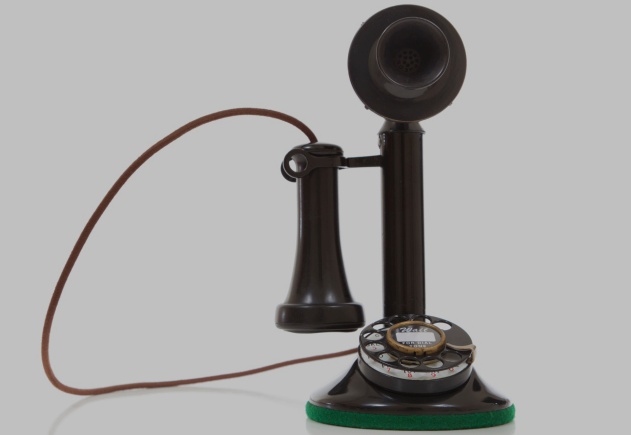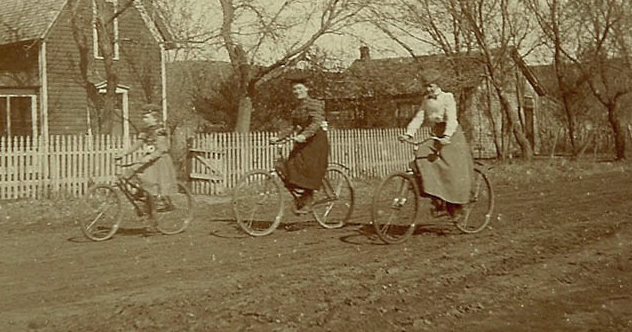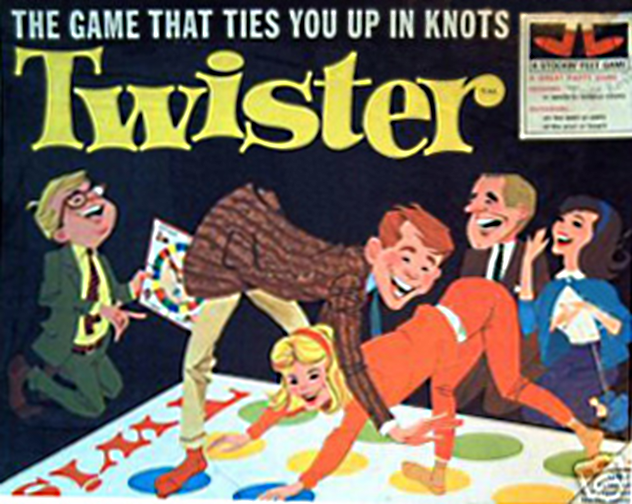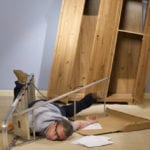 Creepy
Creepy  Creepy
Creepy  Technology
Technology 10 Scientific Breakthroughs of 2025 That’ll Change Everything
 Our World
Our World 10 Ways Icelandic Culture Makes Other Countries Look Boring
 Misconceptions
Misconceptions 10 Common Misconceptions About the Victorian Era
 Mysteries
Mysteries 10 Strange Unexplained Mysteries of 2025
 Miscellaneous
Miscellaneous 10 of History’s Most Bell-Ringing Finishing Moves
 History
History 10 Great Escapes That Ended Right Back in Captivity
 Weird Stuff
Weird Stuff 10 Fascinating Things You Might Not Know About Spiders
 Food
Food 10 Everyday Foods You Didn’t Know Were Invented by the U.S. Military
 History
History 10 Odd Things Colonial Americans Kept at Home
 Creepy
Creepy 10 More Representations of Death from Myth, Legend, and Folktale
 Technology
Technology 10 Scientific Breakthroughs of 2025 That’ll Change Everything
 Our World
Our World 10 Ways Icelandic Culture Makes Other Countries Look Boring
Who's Behind Listverse?

Jamie Frater
Head Editor
Jamie founded Listverse due to an insatiable desire to share fascinating, obscure, and bizarre facts. He has been a guest speaker on numerous national radio and television stations and is a five time published author.
More About Us Misconceptions
Misconceptions 10 Common Misconceptions About the Victorian Era
 Mysteries
Mysteries 10 Strange Unexplained Mysteries of 2025
 Miscellaneous
Miscellaneous 10 of History’s Most Bell-Ringing Finishing Moves
 History
History 10 Great Escapes That Ended Right Back in Captivity
 Weird Stuff
Weird Stuff 10 Fascinating Things You Might Not Know About Spiders
 Food
Food 10 Everyday Foods You Didn’t Know Were Invented by the U.S. Military
 History
History 10 Odd Things Colonial Americans Kept at Home
10 Unnecessary Fears People Had Of Everyday Things
While it is quite normal for humans to have fears and doubts about new things, we have sometimes taken these fears to highly unnecessary levels. Many changes through history have been met with fear that they will destroy people’s bodies, minds, morality, or some combination thereof. Spoiler alert: They didn’t.
10 Trains

The first trains fell under the scrutiny of physicians who claimed that the “high speed” at which they traveled (about three times as fast as a horse-drawn carriage) was abnormal for the human body and could make a person run mad. The Royal Bavarian Medical College even supported the claim that people who rode in trains could end up with a type of brain fever called “delirium furiosum.”
Delirium furiosum was not limited to people who rode in trains alone. Onlookers and passersby who were unfortunate enough to see a train pass by could also end up with it. It was suggested that walls at least 2 meters (6 ft) high be constructed on both sides of the rail tracks for the sake of these “innocent” onlookers, so that they would not experience the unfavorable results of seeing a train pass.
9 Furbies
Furbies are furry toys with large eyes and ears that repeat whatever someone says to them. They first appeared in the US in 1998 and were an instant hit. Furbies can only speak 100 preprogrammed English words and cannot learn new words, although they have an artificial intelligence that helps them string their preprogrammed words to form the sentences that they hear.
The National Security Agency banned them from its Maryland office because they feared that they were being used to spy on the agency. An internal memo sent to all agents in the agency claimed that Furbies were embedded with computer chips that could make them speak 200 words, specifically 100 English words and 100 “Furbish” words.
They also feared that since Furbies repeated what they heard, they could expose government secrets when their owners took them home by simply repeating what they heard at work. There were also speculations that the toys had internal storage memories which allowed them record conversations. In fact, part of the memo specifically reminded the agents that the NSA had a policy which forbade them from bringing anything capable of recording audio or video to work. Nevertheless, the simple fact is that Furbies merely repeat what they hear and cannot record anything, either in audio or video. The NSA’s fears were completely unnecessary.
The NSA wasn’t the only entity with conspiracy theories about Furbies. Some people claimed that Furbies could launch space shuttles, and one woman swore that her Furby could sing Italian operas. Others claimed that the company making Furbies was working on ones that could drive.
8 Novels

Early American anti-novelists likened novels to poison and opium, using words like “foolish” and “worthless” to describe them. To them, novels were nothing but books that gave people an untrue illusion of life. They feared that novels, most especially romance novels, could make people behave abnormally and misjudge other people’s behavior. They also believed that novels stained readers’ minds and encouraged them to seduce others or to allow themselves to be seduced by others. One of the greatest novel critics of the day, Reverend Samuel Miller, even stated that novels destroyed people’s minds and lives.
Reverend Enos Hitchcock, another pastor who himself was a novelist, also took time to criticize not only novels, but plays, saying that they corrupted people and destroyed their morals. He also stated that the novels that women read should be monitored so the readers won’t enter into marriages with high expectations. He compared novels to food, stating that parents often took their time to feed their children with food for their stomach but took no interest in what was fed into the child’s mind.
7 Telephones

The invention of the telephone in 1876 was met with enthusiasm and confusion, as many people did not know what exactly it was meant for. AT&T and Bell, the first telephone companies in the United States, initially promoted the telephone as a business tool, and they discouraged people from using it for nonbusiness or other friendly calls. They later turned around and began to promote it for nonbusiness use when they realized that these calls were the real money spinners.
Some people feared that the telephone would break the home, discourage people from visiting their friends, and destroy moral values. The telephone came at a time when moral values were held in very high esteem, and there was very strict etiquette guiding its use. Answering or making phone calls while in bedclothes was taboo, and sending invitations over the telephone was forbidden.
Aside from these unnecessary fears, there were also some real concerns about privacy. Before people began installing telephones in their houses, they had to go to general stores and other public places to use a public phone. This meant that passersby could hear what they were saying. Even when switchboards came along, and more people installed telephones in their homes, privacy was still an issue. The switchboard operators could listen to people’s calls, and so could their neighbors, who often shared telephone lines with them.
6 Automated Teller Machines

The Automated Teller Machine, or ATM, was not invented by a single person. It was invented by several people working independently. Some developed ATMs that could only dispense cash, and some developed ATMs that could only receive cash deposits. Others developed ATMs that could both dispense and receive cash. Nevertheless, many of the first ATMs were not regarded as true ATMs. The first ATM that was seen as a true ATM was the “Bankograph” by Luther Simjian. Also called the “bankmatic” or “hole-in-the-wall machine,” the bankograph could only receive cash deposits and was installed at a Citibank branch in 1960 on an experimental basis.
It was not widely accepted and was seen as nothing more than an unnecessary piece of machinery made only to complicate banking. Its safety was put into question, and many feared that they would lose their money to the new, untested machine. To prove to people that the ATM received their money, a small camera inside took a photograph of the cash entering the machine. The photograph was then given to the depositor as a form of receipt. However, this was not enough to convince people to use the machines.
The only people who used the ATM were a limited amount of gamblers and prostitutes who wanted to avoid any form of contact with bank tellers. Citibank soon abandoned the ATM. Shepherd-Barron later came up with another ATM, but people still believed it was unnecessary and feared that their money might go missing. They only developed trust in it after they were forced to use it during a snowstorm.
5 Female Bicycle Riders

Women were not encouraged to ride bicycles back in the 1800s, because men feared that a woman capable of riding a bicycle would be able to do almost anything else, such as attaining freedom. Women were heavily discouraged from riding bicycles with strict warnings that they could end up with depression, heart problems, and several other nonexistent health issues. In fact, a newspaper went as far as publishing 41 bizarre and funny rules that female riders were to observe while riding. They were advised not to wear a man’s cap, not to condemn other people because of their legs, not to refuse other people’s assistance when going uphill, not to chew gum, not to scream when they see a cow, not to get a “bicycle face,” and to always ride with their sewing kit.
“Bicycle face” was termed a medical risk. It was said to leave women with stiffened jaws, exhaustion, serious wrinkles, tightened lips, and a funny-looking face with the eyes almost bursting out of their sockets. It was claimed that men were also at risk of the bicycle face, but women were at more risk because they were not as good as men at cycling. Besides, the average man would not mind ending up with bicycle face, since he cared less about his looks.
4 Electricity

People in the past didn’t just fear electricity because of its ability to electrocute and kill. They also feared it for several reasons, including its perceived ability to cause (and interestingly, cure) diseases. The undesirable results of frequent exposure to X-rays by X-ray operators compounded people’s fear of electricity, and Thomas Edison’s experiments, which promoted the use of electricity to kill humans and animals, didn’t help, either. The early fears associated with electricity might have even been the reason that many US citizens did not initially electrify their homes. This is debatable, however, as cost and logistic problems could have been responsible.
Electricity was believed to be the both cause and cure of a disease known as “neurasthenia.” Coined by George Beard in 1869, neurasthenia was supposedly caused by the use of electrical devices like telephones and telegraphs. He explained that their continued use sped up people’s lives and made them older than their actual age. It also made them tired and weak.
The disease was quite common among members of the upper class, who saw it as fashionable since it was proof that they could afford the luxuries of the “modern world.” It soon spread to members of the lower class and was quite common until it disappeared in 1930.
Somehow, electricity was indeed the cure for neurasthenia. An afflicted person was cured by the application of electrical shocks to the body.
3 Emo

Emo, meaning a combination of emotional hardcore rock and punk, is a music genre that first appeared in the Unites States in 1980. In 2003, it made it to Russia, where it soon developed a large following. In 2008, Russian legislators, concerned that emo caused depression and antisocial behaviors and led to suicide, moved to pass a law to heavily censor emo websites and stop people dressed in emo fashion from entering schools and government installations. They claimed that the emo style was a social danger and a threat to the stability of Russia, and the ban was necessary to make sure that Russia had someone to rule it by the year 2020.
Russian emo supporters, who were known for their black and sometimes pink clothing, painted nails, studded belts, bizarre hairstyles, leather jackets, and excess eye shadow, immediately began protests over the proposed ban. They had placards with messages like “Kill the State in Yourself” and “A Totalitarian State Encourages Stupidity.” Emo kids in the United Kingdom began protests, claiming that they were being compared with criminals and Nazis.
The proposed ban was later shelved and not put into law. Research later showed that emo, as well as all other types of music, does not cause depression or change in mood. Instead, listening to music was found to be a symptom of depression rather than a cause, and it had a positive psychological effect on affected people.
2 Automobiles

Saudi Arabia does not allow women to drive because of the fear that female drivers would leave their houses more than they should, interact with men who weren’t related, and (according to one Saudi cleric) damage their ovaries and pelvises, which could lead to children with birth defects.
Back in the 1920s, people feared that automobiles made teenagers less religious and encouraged them to have sex, commit crimes, and disobey their parents. College lecturers also feared that automobiles distracted students from learning and gave girls unlimited freedom, leading them to consequently drop out of school. This fear was so real that by 1927, 17 of the 35 top US colleges banned students from bringing cars to schools.
The fear of people having sex in cars was real. Research revealed that unmarried youths frequently engaged in such encounters in vehicles instead of the common practice of meeting at the girl’s house or in a more public place. In fact, it was found that half of the girls who had been having sex in the 1950s had been doing so in cars.
Automakers probably knew this, as advertising often linked cars to courtship. Henry Ford allegedly went as far as reducing the seat length of the Ford Model T to discourage people from having sex in it. He failed. Many of the other fears about cars were unjustified and unnecessary. Even the sex fear was grossly overblown, since people had been having sex in horse-drawn carriages long before the invention of cars.
1 Twister

Reyn Guyer first got the idea for the Twister game while he was trying to make a design for a shoe company. He initially called the game “King’s Footsie” and hired Neil Rabens and Charles Foley to help him work on the design. They came up with different styles for playing the game but settled for one that they called “Pretzel,” which was later changed to “Twister.” Guyer licensed the game to Milton Bradley, which released it to the market. It flopped. Many retailers refused to sell it, and Sears refused to add it to their catalog.
The 1960s was a time when men and women were not expected to be very close to each other except when they were dancing. Twister not only brought them close; it made them intertwine with each other in eye-raising positions. This made many, including several Milton Bradley executives, believe that the game was indecent and had a sexual undertone. People doubted if it could even be played by children, and competitors referred to it as “sex in a box.”
Milton Bradley was about to give up on it when the public relations company handling Twister’s promotion featured it on the Tonight Show, where host Johnny Carson played it with actress Eva Gabor. Although the both of them were intertwined during the game, the fun that they had removed the misconception that the game promoted sex. The next day, lots of people lined up at Abercrombie & Fitch to buy the game, and the rest is history.
You can check out Elizabeth’s blog where she writes about facts, facts, facts, and more facts. She updates four times a week.








